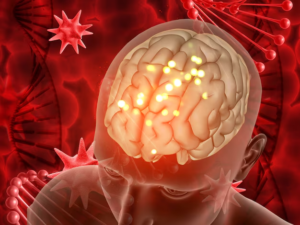Understanding Strabismus: An Ayurvedic Perspective
Understanding Strabismus: An Ayurvedic Perspective commonly known as squint or crossed eyes, is a condition where the eyes do not properly align with each other. This misalignment can lead to issues with depth perception, double vision, and can affect a person’s self-esteem. While traditional treatments often include corrective lenses or surgery, Ayurveda offers a holistic approach to managing this condition. In this blog, we will explore strabismus from an Ayurvedic perspective, discussing its causes, symptoms, and potential treatments.
What is Strabismus?

Strabismus occurs when the muscles controlling the eye do not function harmoniously. This can lead to one eye deviating inward, outward, upward, or downward. The condition can be constant or intermittent and is often diagnosed in childhood. However, adults can also develop strabismus due to various factors.
Causes of Strabismus
The causes of strabismus can be varied and include:
- Genetic Factors: A family history of strabismus can increase the likelihood of developing the condition.
- Neurological Disorders: Conditions affecting the brain can disrupt the signals sent to the eye muscles.
- Vision Problems: Issues such as farsightedness can lead to strabismus as the eyes struggle to focus.
- Muscle Imbalance: Weak or overactive muscles around the eyes can lead to misalignment.
- Trauma: Injuries to the head or eyes can cause changes in eye alignment.
Symptoms of Strabismus
The symptoms of strabismus can vary based on the severity and type of misalignment. Common symptoms include:
- Misalignment of the eyes (one eye may turn in or out)
- Double vision
- Difficulty with depth perception
- Eye strain or discomfort
- Head tilting to one side
- Poor vision in one eye (amblyopia)
Ayurvedic Approach to Strabismus
Ayurveda, the ancient system of medicine from India, focuses on balancing the body, mind, and spirit to promote health. It uses a combination of herbal remedies, dietary changes, yoga, and lifestyle modifications. According to Ayurveda, strabismus can be linked to imbalances in the doshas—Vata, Pitta, and Kapha.
- Identifying Dosha Imbalance: The first step in treating strabismus is identifying which dosha is imbalanced. An Ayurvedic practitioner may evaluate physical symptoms, lifestyle, and emotional factors to determine the underlying cause.
- Herbal Remedies: Several herbs are believed to support eye health and strengthen the muscles around the eyes. Some of these include:
- Triphala: A combination of three fruits that promotes overall eye health and can help improve vision.
- Amla (Indian Gooseberry): Rich in vitamin C and antioxidants, it is known to enhance eyesight.
- Ghee: Clarified butter is often used in Ayurvedic remedies to nourish the eyes and support vision.
- Dietary Changes: A balanced diet tailored to one’s dosha can significantly impact eye health. Foods rich in omega-3 fatty acids, antioxidants, and vitamins A and C are beneficial. Examples include:
- Leafy greens (spinach, kale)
- Carrots
- Nuts and seeds
- Fish (for omega-3s)
- Yoga and Eye Exercises: Specific yoga poses and eye exercises can help strengthen the eye muscles and improve coordination. Some effective practices include:
- Palming: Rubbing palms together to generate heat and placing them over closed eyes to relax.
- Focus Shifting: Alternating focus between a near object and a far object to enhance eye muscle coordination.
- Bhramari Pranayama: This breathing technique can help relieve tension around the eyes.
- Lifestyle Modifications: Adopting a lifestyle that promotes overall well-being can help manage strabismus. This includes:
- Regular eye check-ups
- Limiting screen time
- Ensuring proper lighting while reading or working
- Maintaining good posture to reduce strain on the eyes
- Panchakarma Therapy: In more severe cases, Ayurveda may recommend Panchakarma, a detoxification process that helps restore balance in the body. This may include therapies such as:
- Abhyanga: A full-body oil massage that improves circulation.
- Shirodhara: Pouring warm oil on the forehead, which can help reduce stress and improve mental clarity.
Mind-Body Connection
Ayurveda emphasizes the connection between mind and body. Emotional stress can contribute to physical ailments, including eye conditions. Practices such as meditation and mindfulness can help manage stress and promote overall well-being.
- Meditation: Regular meditation can enhance focus and clarity, which may help with eye coordination.
- Visualization Techniques: Imagining the eyes aligning properly can be a powerful tool for improvement.
Success Stories and Case Studies
Many individuals have reported positive outcomes from incorporating Ayurvedic practices into their lives. Case studies indicate that children and adults alike have experienced significant improvements in eye alignment and vision. These success stories highlight the importance of a holistic approach that addresses both physical and emotional aspects of health.
Conclusion
Strabismus is a complex condition that can impact an individual’s quality of life. While conventional treatments are effective, Ayurveda offers a unique and holistic approach that addresses the root causes of the condition. By focusing on balancing the doshas, incorporating herbal remedies, making dietary changes, and practicing yoga, individuals can work towards improving their eye health.
If you or someone you know is dealing with strabismus, consider consulting with an Ayurvedic practitioner. A tailored approach can provide not only relief from symptoms but also promote overall wellness. Remember, the journey to health is a holistic one, where body, mind, and spirit work together in harmony.
Final Thoughts
As awareness of alternative therapies grows, it’s essential to recognize that Ayurveda can be a valuable complementary approach to managing strabismus. While it may not replace traditional medical treatments, integrating Ayurvedic principles can empower individuals to take charge of their health and well-being. By nurturing the body and mind, one can pave the way for a brighter, clearer future.








Leave a reply